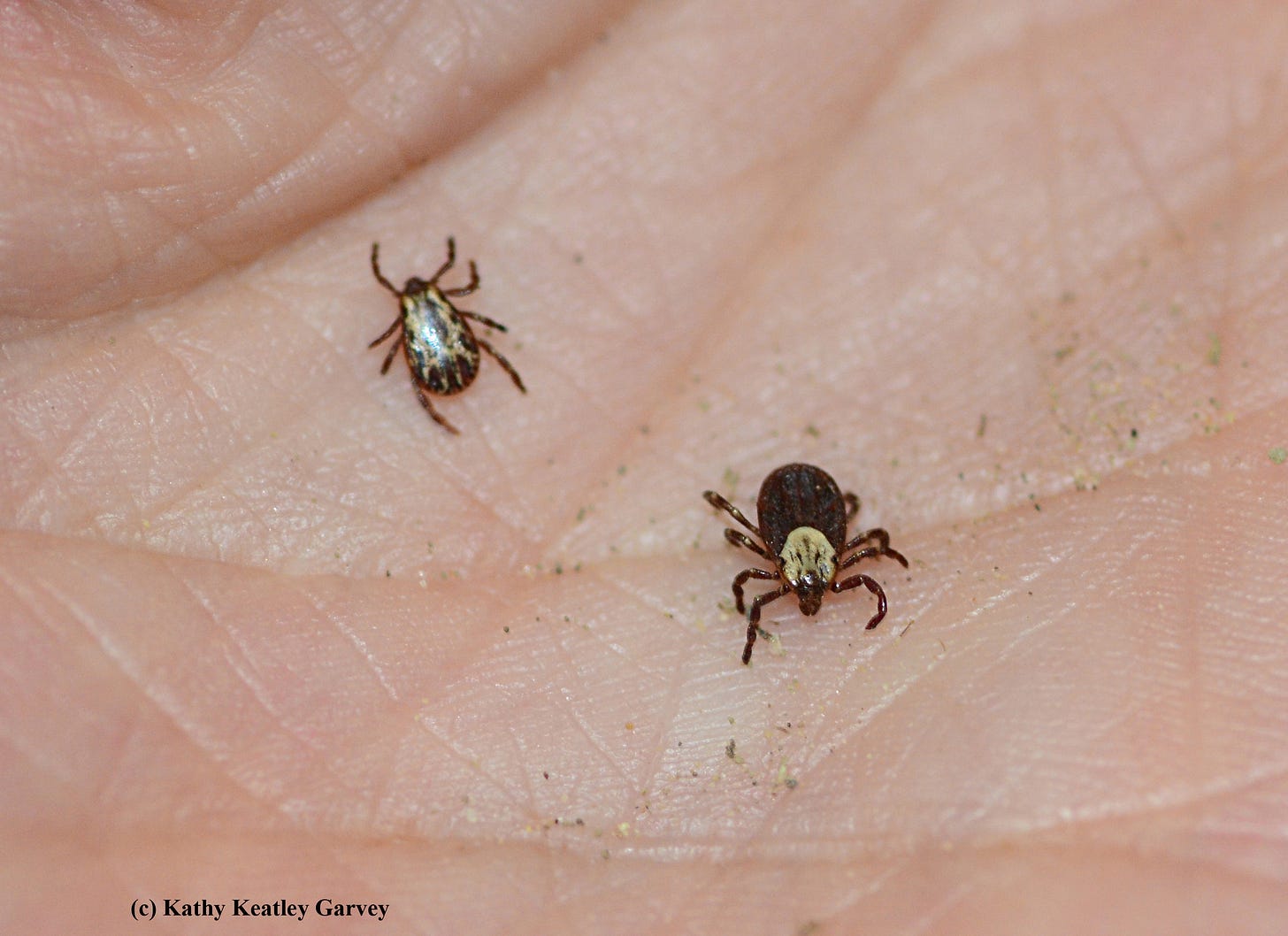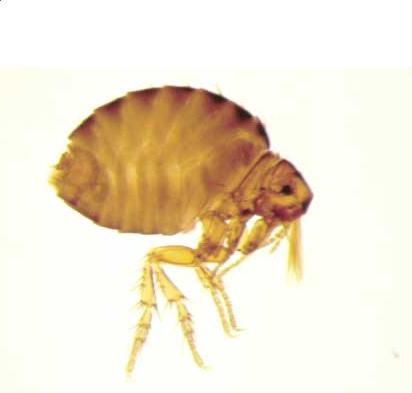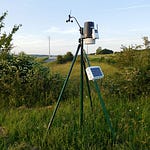As the weather warms, so do outbreaks of fleas and ticks. Today’s newsletter podcast features an interview with retired veterinarian and Master Gardener Heidi Napier, who talks about these pests, along with a scenic bypass about controlling slugs and snails using less toxic products that won’t harm your kids or dogs.
Flea Control Tips
This pest can live indoors and out, as well as on your pets. However, a combination of remedies can reduce a flea population. The trick, though, is to attack the problem simultaneously on three fronts: indoors, outdoors and on your pets.
Here are a few flea control suggestions from the UC Integrated Pest Management Program.
Inside the Home:
• Wash throw rugs and the pet’s bedding in hot, soapy water once a week.
• Vacuum daily or every other day to remove flea eggs, larvae, and adults. Include upholstered furniture, cushions as well as in cracks and crevices of furniture.
• Vacuum carpets, especially beneath furniture and in areas frequented by pets. Recent studies suggest that destroying the vacuum bags isn’t necessary.
• Use a hand sprayer to treat all carpets with an insecticide that contains an insect growth regulator. The most effective spray products contain the Insect Growth Regulator methoprene or pyriproxyfen. Aerosol foggers don’t provide the coverage and long-term effectiveness of direct sprays.
• Hand spray pet sleeping areas, areas beneath furniture, baseboards, and windowsills.
On the Pet:
• If you administer oral or topical products early in the year before flea populations begin to build, the products can prevent fleas from establishing themselves in your home. Contact your veterinarian for advice in selecting the best flea-control product for your situation.
• Use a spot-on or oral treatment, which can be purchased in pet stores or from vets, or a systemic oral treatment, which is available from vets only. Active ingredients suggested by UC that are available over the counter include Fipronil and Imidacloprid. Prescription products include those with the active ingredients Dinotefuran, Lufenuron, Nitenpyram, Pyriprole, Selamectin and Spinosad.
• University of California research has shown that neither Vitamin B1 supplements nor brewer's yeast prevents fleas from feeding. In addition, herbal collars and ultrasonic devices are not effective flea repellents.
• In our home, we spend quality time with our cat and dogs when we bring out the flea comb. This fine-toothed comb manages to pick off at least a couple of fleas from the cat each week, as well as letting us know when there is a major flea outbreak.
Outside the Home:
• If you treat your pets with spot-on or oral treatments, you’ll rarely need to spray outdoors.
• Sprays are only necessary outdoors if you detect lots of fleas, usually in shady areas or places where pets rest. To locate heavy infestations, walk around pet resting areas wearing knee-high white socks. If fleas are present, they will jump onto the socks and be readily visible.
Tick control tips

Ticks can spread several diseases to humans and pets, but Lyme disease is the most common. In California, Lyme disease is carried by the western blacklegged tick which occurs throughout the state.
Lyme disease has been reported in most California counties, but some areas pose higher risks than others.
You can protect yourself from ticks and the diseases they transmit by wearing long pants and long-sleeved shirts outdoors, using an EPA registered repellent with 20-30% DEET, or applying permethrin to clothing.
Check yourself often after being outside in areas that are prone to ticks (forests, woodlands, and grasslands).
Shower within 2 hours of exposure to ticks and place clothing in a hot dryer for an hour to kill any ticks that may be on them.
Safely remove ticks with tweezers by grabbing the tick as close to the skin as possible and slowly pulling it out.
The California Department of Public Health (CDPH) says to control ticks around your home, remove leaf and grass litter from your yard and create a 3-foot barrier of mulch or gravel between your lawn and unmanaged or forested areas.
From the University of Massachusetts/Amherst Hort Notes, May 2023:
Q. I have been receiving offers and seeing advertisements for services to spray for ticks and mosquitoes. Is this something to consider and is it safe?
A. Perimeter yard sprays are recommended as part of a three phase plan: Protect Yourself, Protect Your Pet and Protect Your Yard. I tell people not to depend on a yard spray as their only effort. Wearing permethrin treated clothing/footwear should be a front-burner tactic; a yard spray is a way to further reduce exposure risk.
As far as yard spraying, this is something you can easily do yourself with a hose-end sprayer available at any garden center. Check out our video on yard spraying, as well as other resources about ticks, at capecod.gov/ticks(link is external). When contracting a service, there are key questions to ask about what, where and when to spray.
What? The products should contain the active ingredients bifenthrin or permethrin. These have very low mammalian toxicity and, once they contact leaf litter or soil, they are immobilized, so there is no potential to leach and they are degraded by soil microbes. All Natural products that contain botanical oils like rosemary or cedar are NOT recommended. Research has demonstrated them to be completely ineffective.
Where? Only the perimeter of the yard where there is shade and leaf litter under shrubs and trees. If a service offers to treat the entire yard, they really do not understand ticks.
When? Mid to late May and mid to late June covers the window when nymph stage deer ticks are out. I also recommend a third spray around mid-October when the next generation of adult stage ticks emerge.
A major study is underway to determine how effective perimeter yard sprays are by The New England Center of Excellence in Vector-Borne Diseases. If you are interested in participating, please visit https://www.newvec.org/itch(link is external) to complete their survey.
Larry Dapsis, Deer Tick Project Coordinator – Entomologist, Cape Cod Cooperative Extension
Thank you for also listening to the Garden Basics with Farmer Fred podcast! It’s available wherever you get your podcasts. Please share it with your garden friends.
Fred Hoffman is also a University of California Cooperative Extension Master Gardener in Sacramento County. And he likes to ride his bike.















